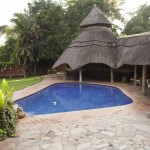Sarah Kingdom visits Matusadona National Park and the stunning Lake Kariba.
Located along the Zambezi River, which forms the border between Zambia and Zimbabwe, Lake Kariba is the world’s largest man-made lake. Formed by damming the Zambezi, 400km below the Victoria Falls, in the Kariba Gorge, where the river narrows between hills of hard rock, the lake is 220km long, up to 40km wide in places, and has a surface area of over 5,500km² – when looking out over Kariba you could be excused for thinking you are gazing out to sea.
Built to supply hydroelectricity to Zambia and Zimbabwe, construction of the dam began in 1955 and concluded in 1959. 86 men lost their lives during the construction of this still impressive dam wall and today only the ghostly tips of a drowned forest of trees serve as a reminder of the lake’s past.
The construction of Kariba Dam necessitated one of the most extensive wildlife operations in history. From 1958 to 1964 Operation Noah, under the leadership of Rupert Fothergill and a team of only 10 men from the Southern Rhodesian Game Department, used make-shift rafts, nets, catching poles and very limited veterinary equipment to rescue over 6,000 animals from the rising waters – from elephants and rhinos to birds and snakes. The majority were relocated to Matusadona National Park.

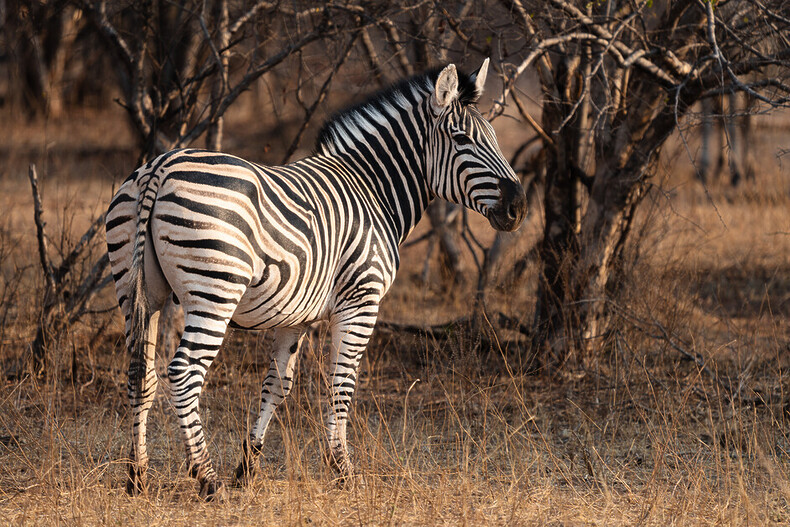
On the southern shores of Lake Kariba, sandwiched between the Sanyati Gorge and the Une River, Matusadona National Park was proclaimed a non-hunting area in 1958, approximately one month before the Italian contractors building the dam wall completed their project. In 1963 the area was proclaimed a game reserve. The name “Matusadona” derives from a colonial mispronunciation of “Matuzviadonha”, which roughly translates to “fallen dung”, a reference to the region’s longstanding status as an elephant paradise.
Within the park’s 1,470km² rich and nutritious grasses flourish along the banks of the lake, providing a myriad of herbivores with plentiful grazing. Away from the floodplains, in thick woodlands and surrounding undulating hills, buffalo, waterbuck, zebra and an array of antelopes thrive. So too do the predators. The lake itself is teeming with hippos and huge Nile crocodiles, and the shoreline gives great sightings of huge herds of elephants.
Once home to the highest density of lions in Africa and a stronghold for elephants and black rhinos, human pressure and over-utilisation of resources impacted terribly on Matusadona, leaving the park in a sorry state indeed. In 2019, Zimbabwe Parks and Wildlife Management Authority invited non-profit conservation organisation, African Parks to co-manage the park and a 20-year mandate was signed, with the goal of revitalising the park for both wildlife and local communities. Matusadona National Park is the first protected area in Zimbabwe to come under the management of African Parks.

While there have been many challenges, African Parks has begun to revive Matusadona and secure its future. With protection of the park through conservation, law enforcement and community engagement there’s been a noticeable reduction in poaching and wildlife reintroductions have seen the park fast becoming a haven for wildlife, a source of hope for local people and a popular tourist destination once more.
Whilst not inside the park, the Bumi Hills Safari Lodge’s proximity to Matusadona means wildlife moves freely between the national park and the lodge’s private concession, creating terrific game-viewing opportunities. Herds of impala and zebra graze contentedly near the lodge, while families of magnificent kudu gaze out from under the trees. Birdlife is abundant, with marabou storks, Egyptian geese, hornbills and a myriad of others in plentiful supply while fish eagles fill the air with their mournful calls.
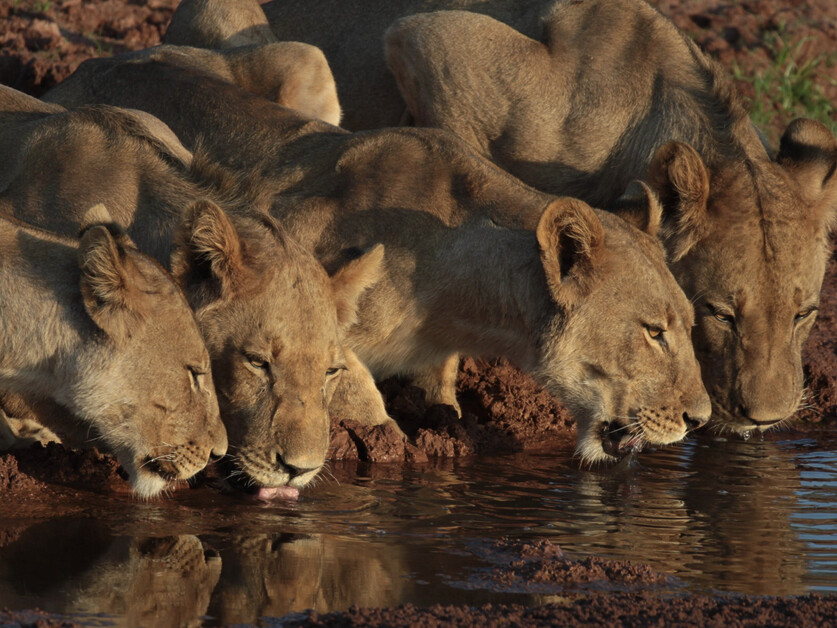
What’s a lake without some fishing? Over 40 different fish species call Lake Kariba home, from kapenta to bream and the most famous of all, the tiger. In 1967 huge shoals of kapenta (small sardine-like fish) were airlifted to the lake from Zambia’s Lake Tanganyika and the descendants of these fish today form the basis of a huge industry, for both traditional and commercial fishermen. The fishermen are out on the water all night. From sundown till sunrise the lake twinkles with the lights from hundreds of kapenta fishing rigs, stretching out across the water, mirroring the twinkling of the stars above.
Guests at Bumi Hills Safari Lodge can go out fishing, predominantly for bream or tiger fish, with perhaps the occasional barbel (catfish). Tiger fish are an indigenous species, renowned for their speed, agility and ferocity. It’s no easy feat to hook and land one, making them one of the most sought-after game fish on the continent. If fishing is not your thing, spend your time boating, birding, stargazing, on cultural visits to the nearby community, out on game drives or do a walking safari, where amongst other things, you can see ancient, fossilised dinosaur footprints, unique to the area.
Tell Me More About Lake Kariba in Matusadona National Park
Lake Kariba is a stunning piece of water and Matusadona National Park, stretching from its southern shore and up the Zambezi Escarpment, is a remarkable African wilderness.
Images (C) Bad Rabbit Studio and Kelly Landray.
Bumi Hills Safari Lodge
Bumi Hills Safari Lodge, Lake Kariba, Zimbabwe.
Bumi Hills Safari Lodge, set on a range of remote hills overlooking Lake Kariba is a haven of serenity and luxury and a great place to base yourself for exploring the area.
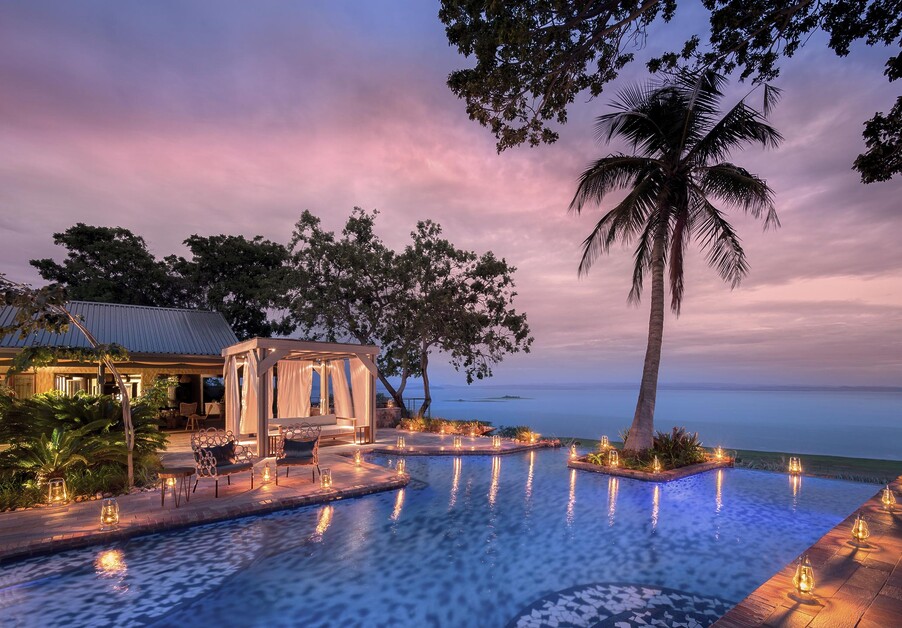
Perched high on the hills overlooking Lake Kariba, the views from Bumi Hills Safari Lodge are captivating. Coming through the doors on arrival, and out into the main area of the lodge, a magnificent infinity pool seems to merge with the endless, shimmering blue waters of the lake stretching out far below. Dining at eye-level with soaring eagles, you have uninterrupted views of elephant families and other wildlife along the lake shore below.
Bumi Hills Safari Lodge has ten spacious suites, each appointed with all the comforts you’d expect on a luxurious holiday – air-conditioning, ensuite bathrooms and private viewing decks with spectacular views of the lake and its surrounds. There’s also a lodge spa, a sparkling infinity pool. and a well-equipped gym.
The lodge’s Baobab Villa is a two-bedroomed private villa, complete with its own living room bar, indoor and outdoor dining decks, a private butler, personal safari guide and dedicated safari vehicle, is ideal for families.
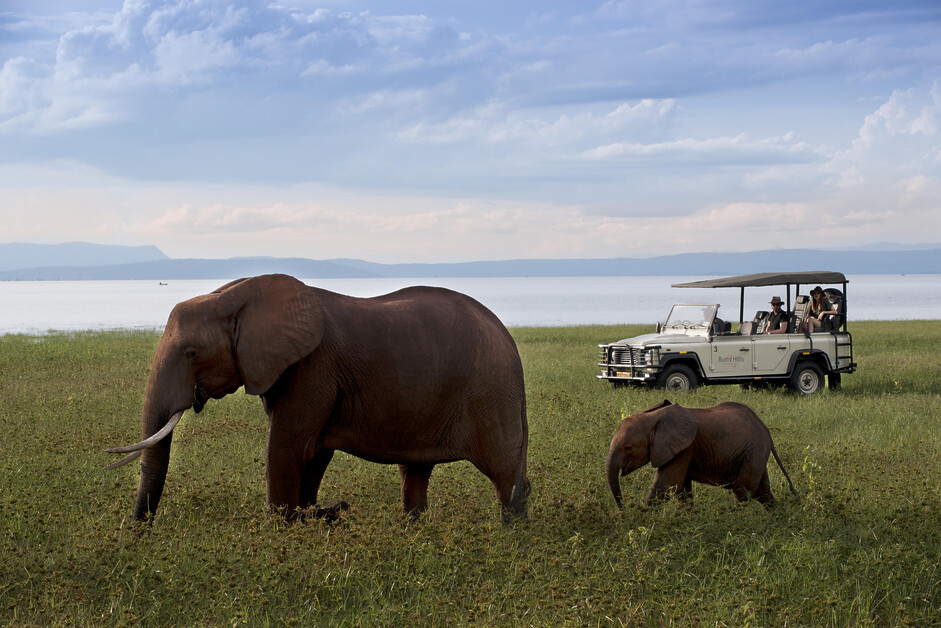
Prices for the suites range from $590 pppn in low season (January – April) to $1,245 pppn in high season (June – August). The Baobab Villa is $2,950 in low season and $6,225 in high season, this is for exclusive use of the villa.
Rates include accommodation, all meals, all beverages (except premium imported spirits and champagne), laundry, morning, afternoon & night game drives, walking safaris, boating, fishing, village visits, sunset cruises and use of the gym.
Getting There
On the Zimbabwean side of Lake Kariba, the largest tourism centre is Kariba town, at the northern end of the lake. If arriving by air it’s best to depart from Zimbabwe’s capital, Harare, and fly to Kariba town, the flight will take one hour. Chartered flights can be arranged to airstrips in or bordering the park such as Bumi Hills Safari Lodge which you could use if staying there.



